The festival of Pir Shalyar
-

A thick blanket of snow is the defining feature of life in the winter months in the mountainous regions of the western Iranian province of Kurdistan. The village of Hawraman Takht, in the Hawraman region close to the Iraqi border, clings precariously to steep mountain slopes. Hawrami houses are made of stone and built in such a way that each house roof serves as forecourt for the house above -
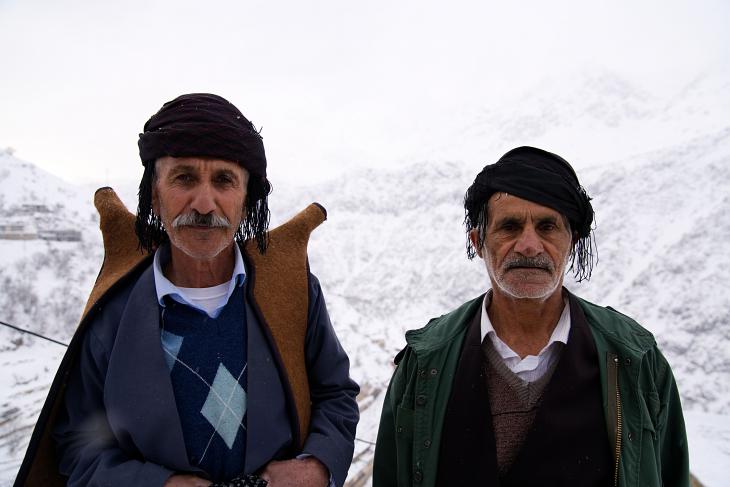
The Hawrami people live in villages and small towns on both sides of the Iran-Iraq border. Their clothing and language distinguish them from other Iranian Kurds. Hawrami is a dialect of Kurdish -
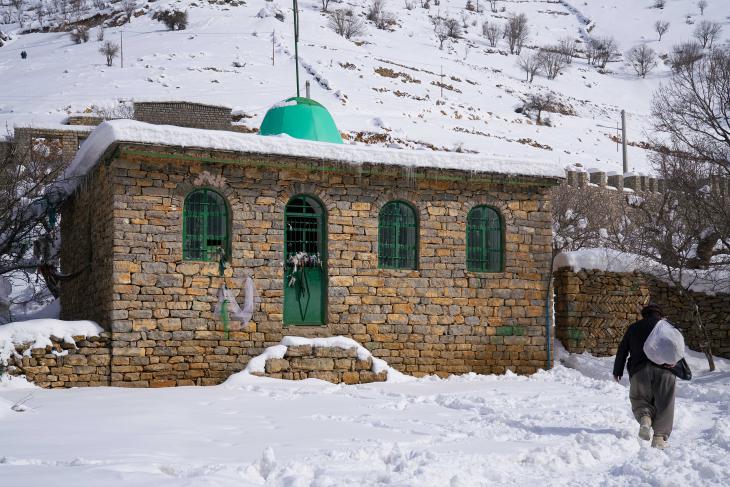
Pir Shalyar is a local saint whose grave lies a kilometre from Hawraman Takht. Though very little is known about him today, the devoutly Sunni Hawrami believe Pir Shalyar to have been a Muslim preacher. Experts, however, consider the cult's origins to be pre-Islamic -
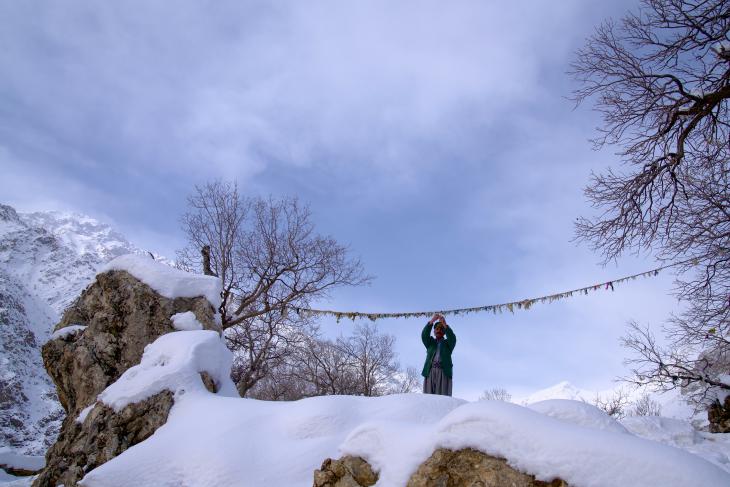
Pilgrims visiting his grave tie scraps of cloth or handkerchiefs to a long iron chain. Each of these little flags represents the prayer or wish of a visitor -
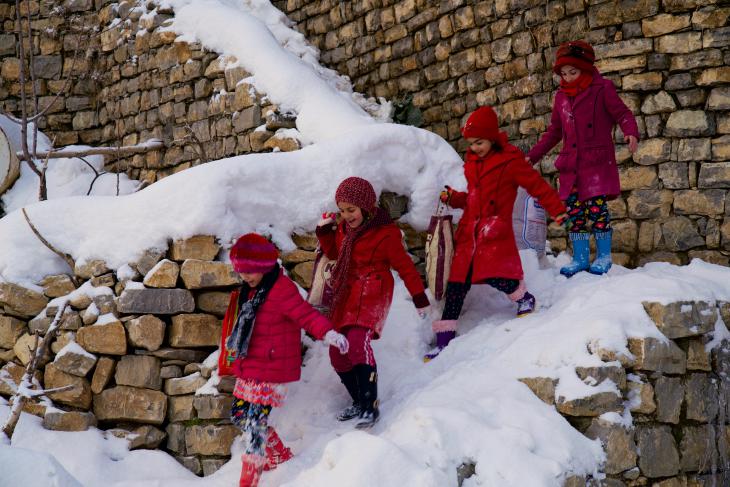
Local people have been gathering here for centuries to celebrate the ancient spiritual festival of "Pir Shalyar" with friends from the surrounding villages. One festival tradition, known as "Klaroschne", has the village children scurrying from house to house before dawn, laden with bulging bags of sweet treats to distribute -
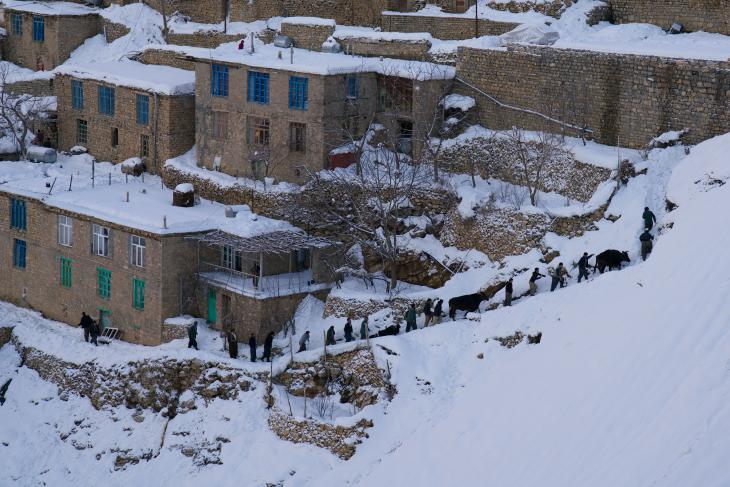
The festivities begin shortly after sunrise with the slaughter of cows and sheep. The animals are dragged through the snow onto one of the roofs -

Bowls of steaming hot soup are made from the meat in the village kitchen and handed out to visitors -
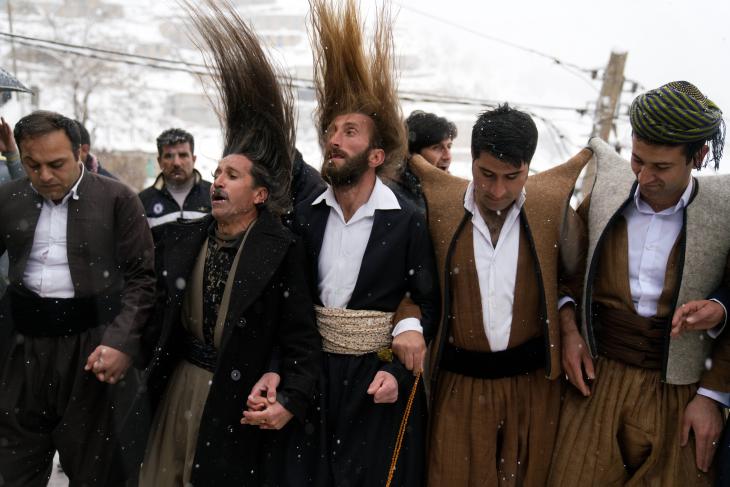
Participation in the "zikr", the ecstatic prayer ritual of the Sufis, is the privilege of a small group of dervishes. Long hair is a typical characteristic of the Qadri Sufis, who are still organised into Sufi orders today -

The daf or Kurdish frame drum provides the rhythm for recitations and is widely used in Sufi ceremonies and local Hawrami folk music -
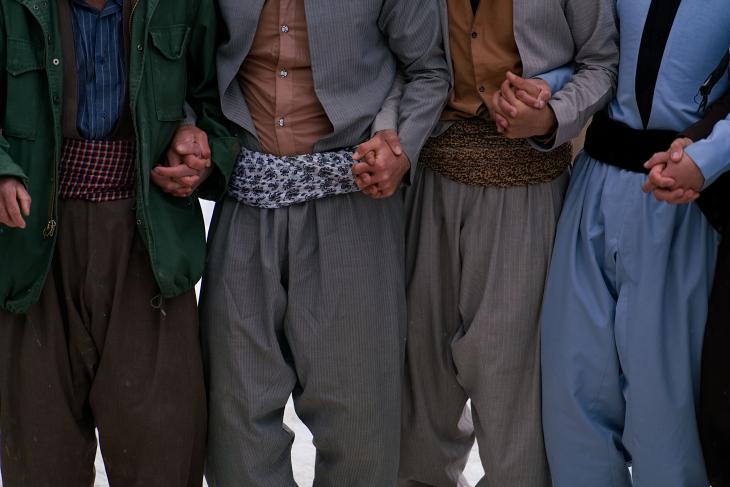
No Hawrami women are to be seen during the ceremony. In the conservative Hawrami society, women mainly practice their religion at home -

Qadri dervish Isa has travelled to the celebrations from a neighbouring village. He is one of the younger members of a Sufi order that holds a weekly zikr -
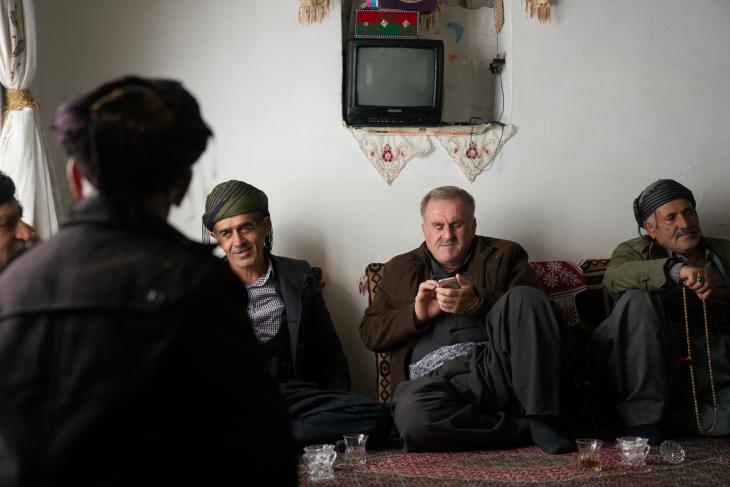
Once the ceremony is over, tea and something sweet can be enjoyed in the surrounding houses. Hawrami hospitality is legendary and informal neighbourly get-togethers are an important part of the festivities -
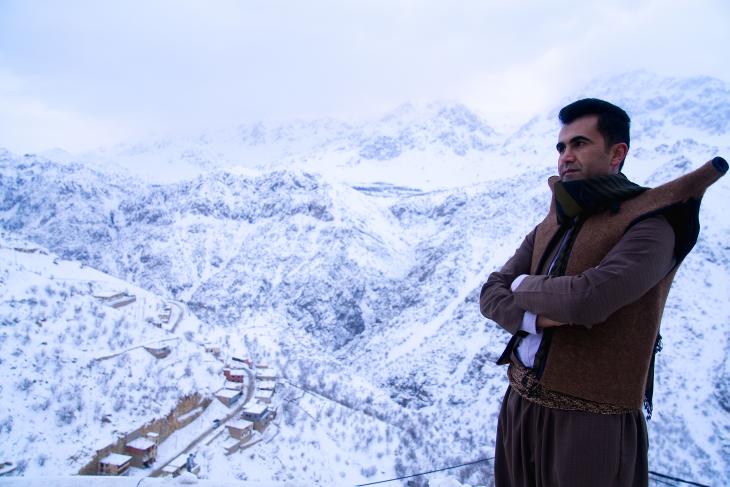
The Iranian government wants to see the Hawrami mountain villages granted UNESCO World Heritage status. The unique culture and landscape of the region, along with the hospitality of the people, are already attracting foreign tourists to the mountains
https://qantara.de/en/node/27934
Link
To all image galleries